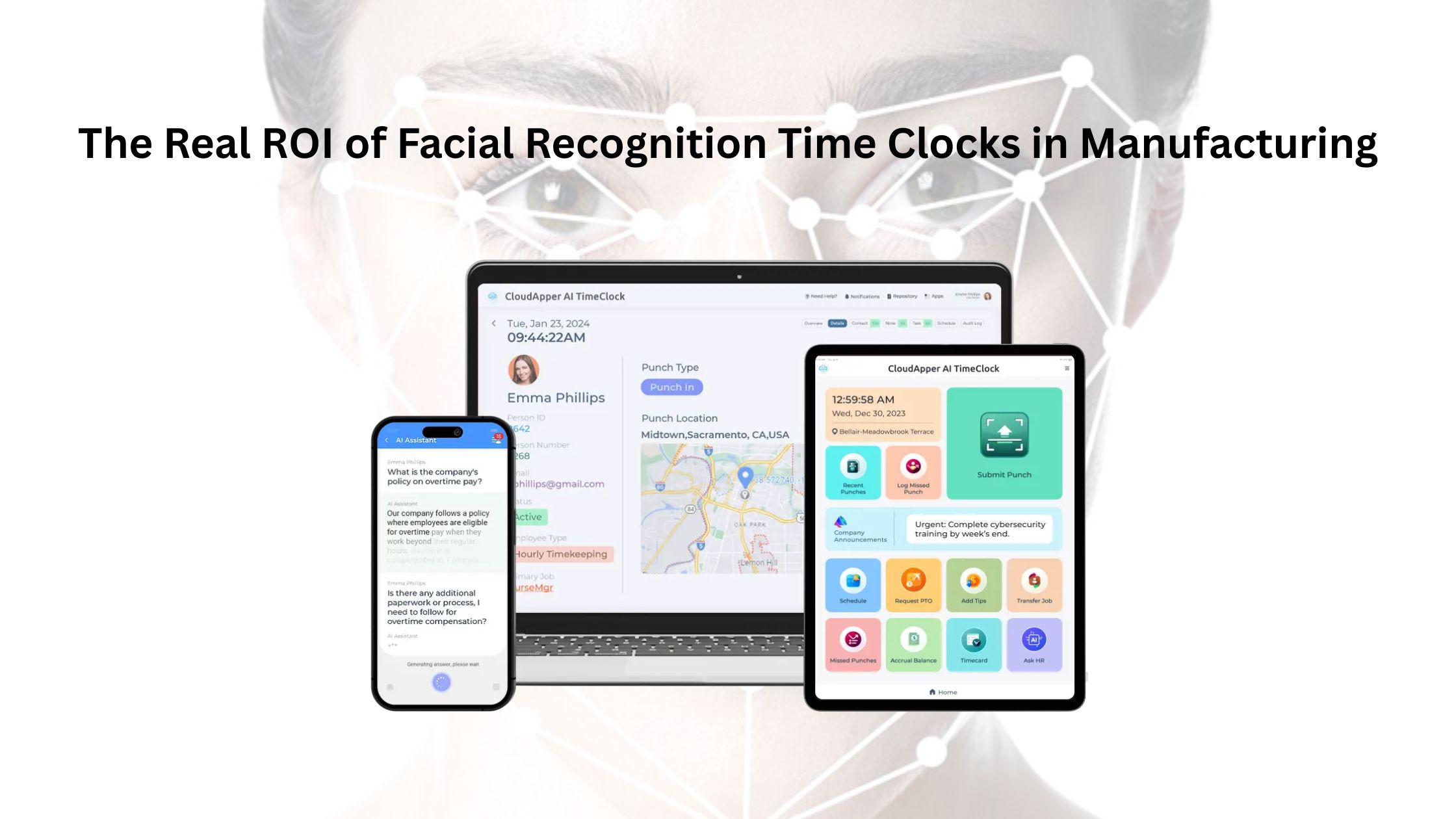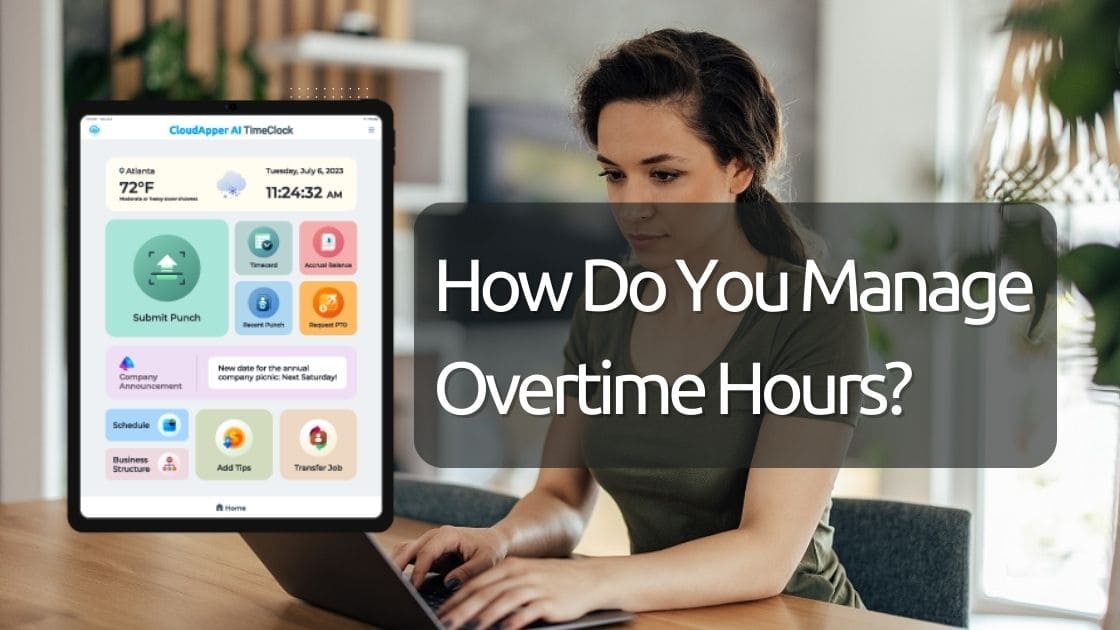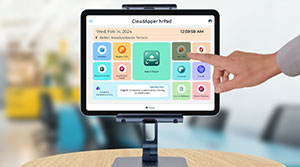Managing overtime is vital for financial health and employee well-being. This article explores the importance of overtime management, regulations, and practical strategies. CloudApper AI TimeClock integrates seamlessly, streamlining compliance and payroll.
Table of Contents
Overtime hours are an important part of managing a workforce, and they need to be managed well for both the financial health of your company and the health of your workers. In this piece, we’ll look at the many different parts of managing overtime hours, from knowing the rules to putting real-world answers into place. We’ll also show you CloudApper AI TimeClock, a flexible solution for tracking time that uses AI and works easily with top HCM systems. This will help you keep accurate records and speed up the payroll process.
For more information on CloudApper AI TimeClock visit our page here.
Managing overtime is crucial for controlling costs and budgeting effectively. CloudApper AI TimeClock integrates seamlessly with HCM systems to streamline payroll and minimize financial strain.
The Importance of Overtime Management
Before getting into how to handle overtime, it’s important to understand why it’s important. Overtime hours, which usually mean paying workers more for extra work hours, can have different effects on your business:
Financial Impact: Overtime pay can make work costs go up by a lot, which can hurt your budget and your ability to make money.
Employee Well-being: Too much overtime can make employees tired, lower their mood, and even cause health problems. This can hurt output and retention.
Regulatory Compliance: If you don’t handle overtime properly, you could get in trouble with the law and have to pay fines.
Operational Efficiency: When arranging and managing overtime hours aren’t done well, operational inefficiencies can happen, which can hurt output as a whole.
Understanding Overtime Regulations
Effective handling of overtime starts with a clear knowledge of the rules. In the United States, the Fair Labor Standards Act (FLSA) says that non-exempt workers must be paid extra if they work more than 40 hours a week. Here are some important things to think about:
Overtime Threshold: Under the Fair Labor Standards Act (FLSA), non-exempt workers who work more than 40 hours in a workweek are eligible for overtime pay. Most of the time, this means paying the employee 1.5 times their usual rate of pay.
Exempt vs. Non-Exempt: Exempt employees, like paid workers who meet certain requirements, don’t get extra pay.
Record-Keeping: Employers must keep correct records of all the hours that non-exempt workers put in, including extra hours.
Compliance with State Laws: Some states also have their own overtime rules, which may have different standards or thresholds than the federal ones.
Excessive overtime can harm employee morale and health. CloudApper AI TimeClock’s user-friendly interface and 24/7 HR assistant promote better work-life balance and employee satisfaction.
Practical Strategies for Managing Overtime
Now that we know the basics about overtime rules, let’s look at some useful ways to handle overtime well:
1. Workforce Planning
Forecast Workload: Use past data and trends to predict times when there will be more work to do, which may require overtime.
Strategic Scheduling: Make effective plans that reduce the need for overtime and make sure there are enough people working during busy times.
2. Overtime Authorization
Clear Policies: Set up clear rules and methods for allowing overtime hours, such as how to ask for and get permission for overtime.
Avoid Unauthorized Overtime: Encourage workers to ask for permission before working extra hours to avoid paying for overtime that wasn’t planned.
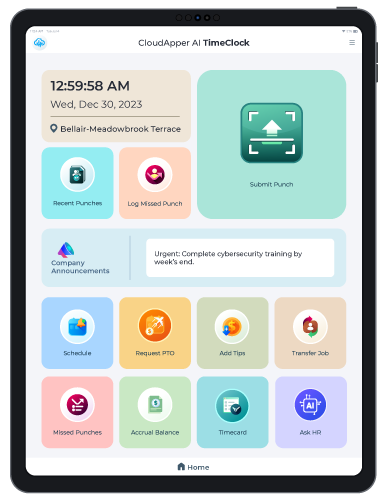
CloudApper AI Time Clock
Greenville Water’s Time Capture Success with Face Recognition TimeClock
3. Employee Communication
Open Communication: Keep the lines of communication open with your workers about overtime rules, expectations, and opportunities.
Voluntary Overtime: When you can, give employees the option to work overtime if you want to keep them from getting tired of their jobs.
4. Time and Attendance Tracking
Accurate Records: Set up a reliable method for tracking time and attendance to keep track of all hours worked, including overtime.
Customizable Solutions: Think about options like CloudApper AI TimeClock, which can be set up to automatically keep track of overtime. This AI-powered time clock has features that make it easy for anyone to use.
5. Compliance Monitoring
Regular Audits: Do regular checks of time and attendance records to make sure that overtime rules are being followed.
Training: Train HR workers and managers on the laws and rules about overtime to reduce the risk of not following them.
CloudApper AI TimeClock ensures compliance with overtime regulations, reducing the risk of legal penalties through automated tracking and real-time insights.
CloudApper AI TimeClock: Your Overtime Management Solution
AI CloudApper TimeClock is a new way to track time that is powered by AI and is meant to make it easier to handle overtime and make sure that payroll is done correctly. Here’s how it could help your business:
Seamless Integration: CloudApper AI TimeClock works well with major HCM systems like UKG, ADP, Oracle HCM, SAP SuccessFactors, Workday, Ceridian Dayforce, Paycom, BambooHR, and PeopleSoft. This makes it easy to add to your existing HR processes.
Buddy Punching and Time Theft Prevention: AI-powered face recognition helps stop buddy punching and time theft. Face recognition is used to make sure that an employee is who they say they are, so that only the real employee can clock in or out.
Customization: You can change the solution to fit the needs of your company. This lets you keep track of overtime, handle plans, take custom data from workers when they check in or out for compliance, and see smart stats that match your needs.
User-Friendly Interface: CloudApper AI TimeClock has an easy-to-use design that makes it easier for workers to track their time, which cuts down on mistakes and makes sure that accurate records are kept.
Real-Time Insights: You’ll be able to see trends in staff hours, overtime, and attendance in real time, which will help you make smart choices and changes.
24/7 HR Assistant: You can use an AI helper all the time with CloudApper AI TimeClock. This virtual assistant is always ready to answer questions about HR from workers. This help is available 24 hours a day, 7 days a week, which makes workers happier and more involved, whether they have questions about HR rules or employee benefits.
Compliance Assurance: CloudApper AI TimeClock helps you stay in line with overtime rules by keeping track of overtime automatically and keeping an eye on compliance. This lowers the risk of penalties and fines.
Conclusion
Effective overtime management is a key part of HR operations that affects both the financial health of your company and the health of your workers. By knowing the rules, putting them into practice, and using tools like CloudApper AI TimeClock, you can make shift management easier, make sure salary is processed correctly, and create a productive and legal work environment.
Don’t let overtime hours become a problem for management. Give your HR team the tools and information they need to handle this part of managing a staff well.
What is CloudApper AI Platform?
CloudApper AI is an advanced platform that enables organizations to integrate AI into their existing enterprise systems effortlessly, without the need for technical expertise, costly development, or upgrading the underlying infrastructure. By transforming legacy systems into AI-capable solutions, CloudApper allows companies to harness the power of Generative AI quickly and efficiently. This approach has been successfully implemented with leading systems like UKG, Workday, Oracle, Paradox, Amazon AWS Bedrock and can be applied across various industries, helping businesses enhance productivity, automate processes, and gain deeper insights without the usual complexities. With CloudApper AI, you can start experiencing the transformative benefits of AI today. Learn More
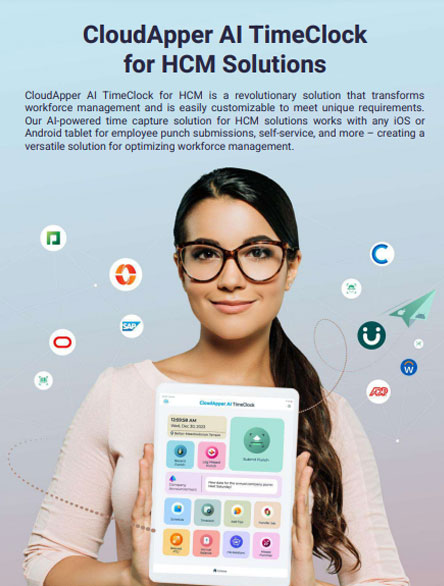
Brochure
CloudApper AI TimeClock
For accurate & touchless time capture experience.
Download Brochure
CloudApper AI Solutions for HR



- Works with








- and more.
Similar Posts
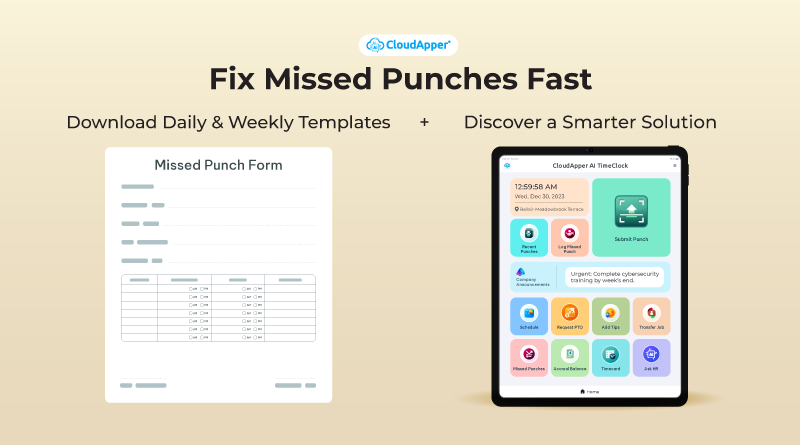
Generate & Download Daily & Weekly Missed Punch Form Templates…
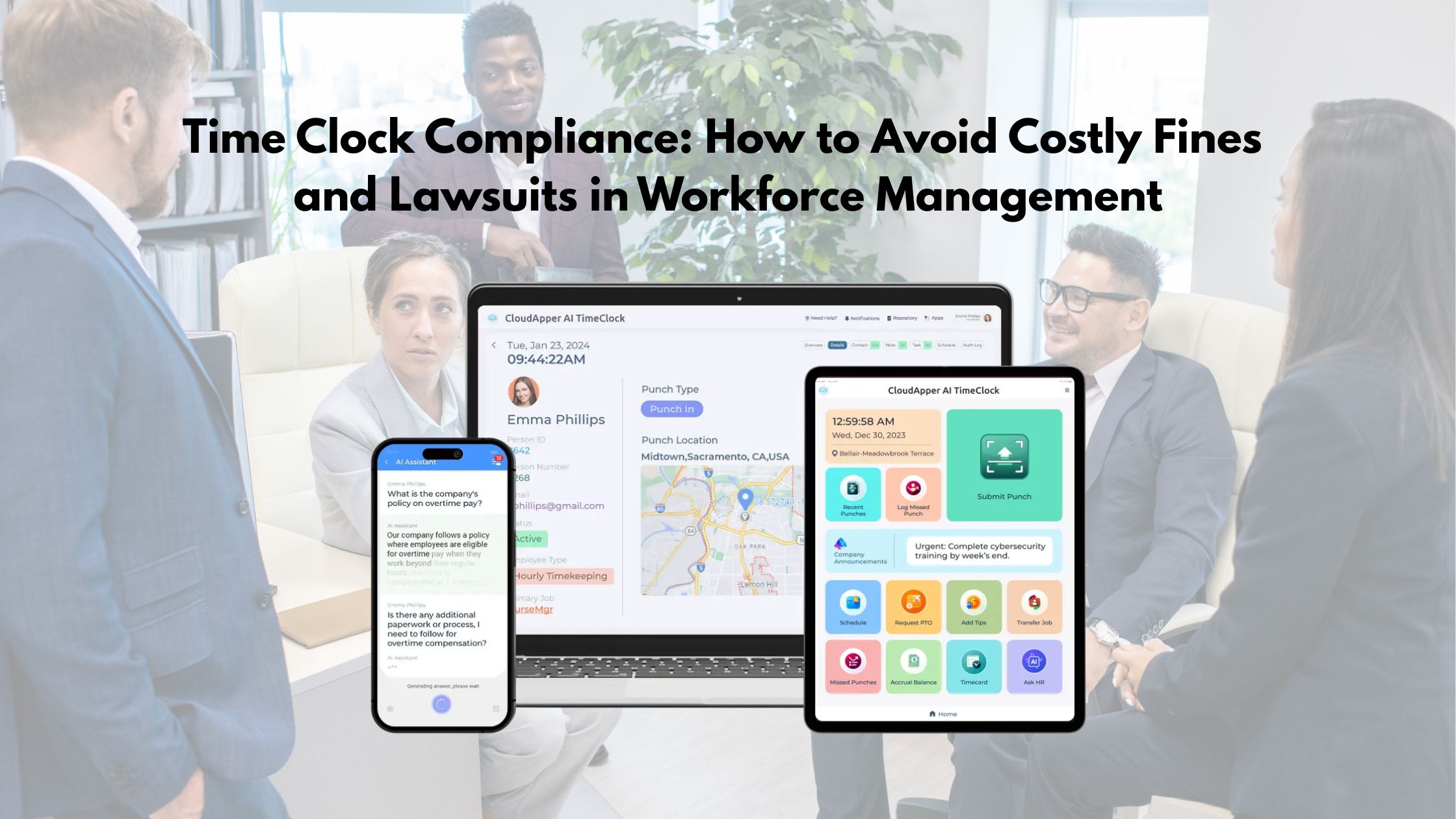
Time Clock Compliance: How to Avoid Costly Fines and Lawsuits…
